The Statue of Liberty and Barcelona: The stories behind these two protest pictures
- Published
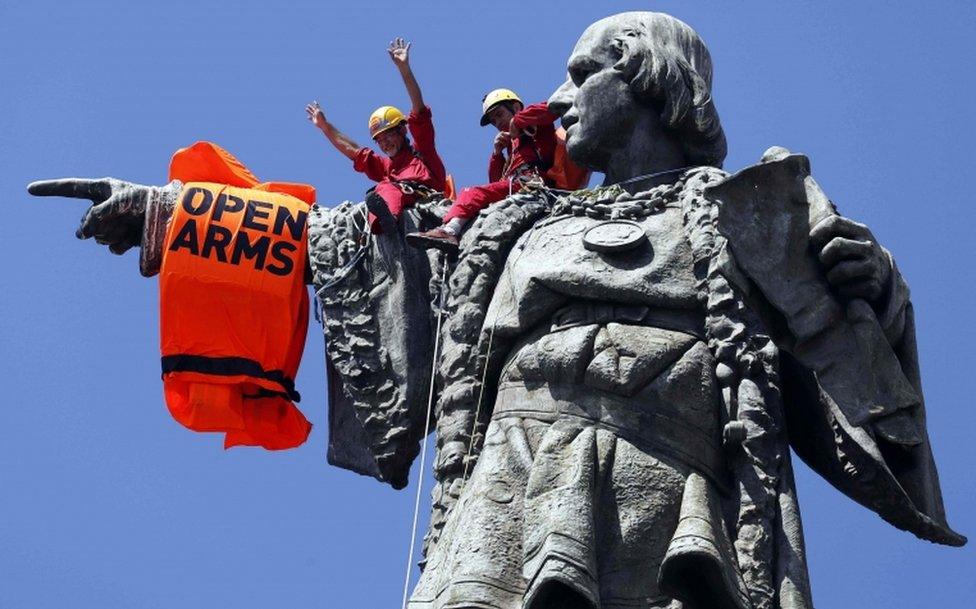
On 4 July, famous statues on both sides of the Atlantic became the focus of two striking protests.
Here's the story behind the pictures...
1. The Columbus monument in Barcelona
What's happening here?
The picture at the top of the page shows a 60-metre (197ft) statue of explorer Christopher Columbus which stands at one end of La Rambla, a long avenue in central Barcelona.
On Wednesday, two activists scaled the monument and strapped a giant orange armband on it, to draw attention to migrants who have died trying to cross the Mediterranean Sea.
What's the context?
The stunt came on the same day a rescue vessel docked in Barcelona. The ship was carrying 60 people who had been rescued off the coast of Libya.
The ship belongs to a Spanish NGO, Proactiva Open Arms, and has been caught up in an international row about migrants plucked from the sea. Italy had refused to give it safe harbour - just weeks after rejecting another rescue vessel, the Aquarius.
Matteo Salvini, Italy's hardline interior minister, has railed against rescue ships run by international charities, and accused them of enabling people traffickers.
"The NGOs will only see Italy on a postcard," he told a radio station last week. "The ports will be closed all summer."
On 29 June, EU member states struck a deal designed to reduce the number of migrants coming to the continent, which could see secure "processing centres" open in Europe.
In the week since then, almost 180 migrants have died or disappeared in three Mediterranean shipwrecks.
The total number of dead since 2015 stands at more than 9,200, according to the International Organization for Migration.
2. The Statue of Liberty in New York
What's happening here?
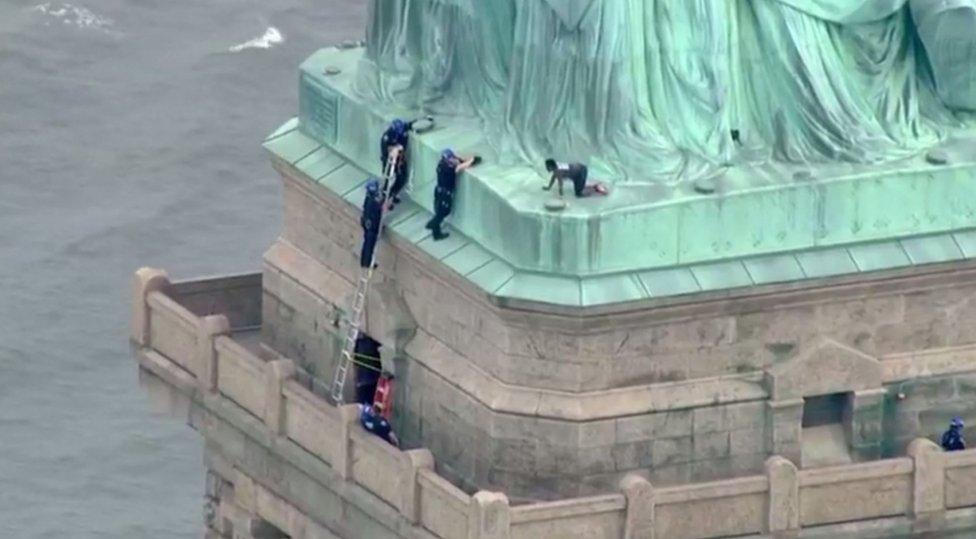
This picture shows police negotiating with protester Therese Okoumou, who scaled the stone pedestal of New York's Statue of Liberty in a protest against Donald Trump's zero-tolerance immigration policy.
She refused to come down, kicking off a three-hour standoff with police that saw the landmark evacuated of tourists.
TV footage showed officers in harnesses and ropes grabbing Ms Okoumou, a personal trainer, after she tried and failed to climb Lady Liberty's robes.
What's the context?
This was actually the second protest at the statue on Independence Day.
The first saw activists' group Rise & Resist unfurl a banner reading: "Abolish ICE" at its pedestal. That demand refers to the Immigration and Customs Enforcement agency, which is responsible for finding and removing America's undocumented immigrants.
Critics, among them Democratic Senator Elizabeth Warren, see ICE as the public face of the White House's crackdown, and some want it to be disbanded.
Ms Okoumou was pictured holding up a T-shirt with "Rise & Resist" and "Trump Care Makes Us Sick" written on it. She is said to be a member of the group, which stressed that it does not condone her decision to climb the landmark.
Why choose the Statue of Liberty? Well, partly for maximum exposure - this was a symbolic day during its busiest tourist week of the year - and partly for what it represents.
Though originally a gift from France, the 93-metre (305ft) statue has come to stand for America's values and its status as a nation built by immigrants. It's not the first time the statue has been a focus of the immigration debate since Mr Trump came to office.
A sonnet inscribed on a plaque inside its base includes the lines: "Give me your tired, your poor, Your huddled masses yearning to breathe free.
"The wretched refuse of your teeming shore.
"Send these, the homeless, tempest-tost to me,
"I lift my lamp beside the golden door!"
American poet Emma Lazarus wrote the sonnet in 1883, and the "huddled masses" she spoke of were immigrants flocking to the US - many of whom passed through the port of New York.
- Published6 July 2018

- Published4 July 2018

- Published2 July 2018

- Published3 July 2018
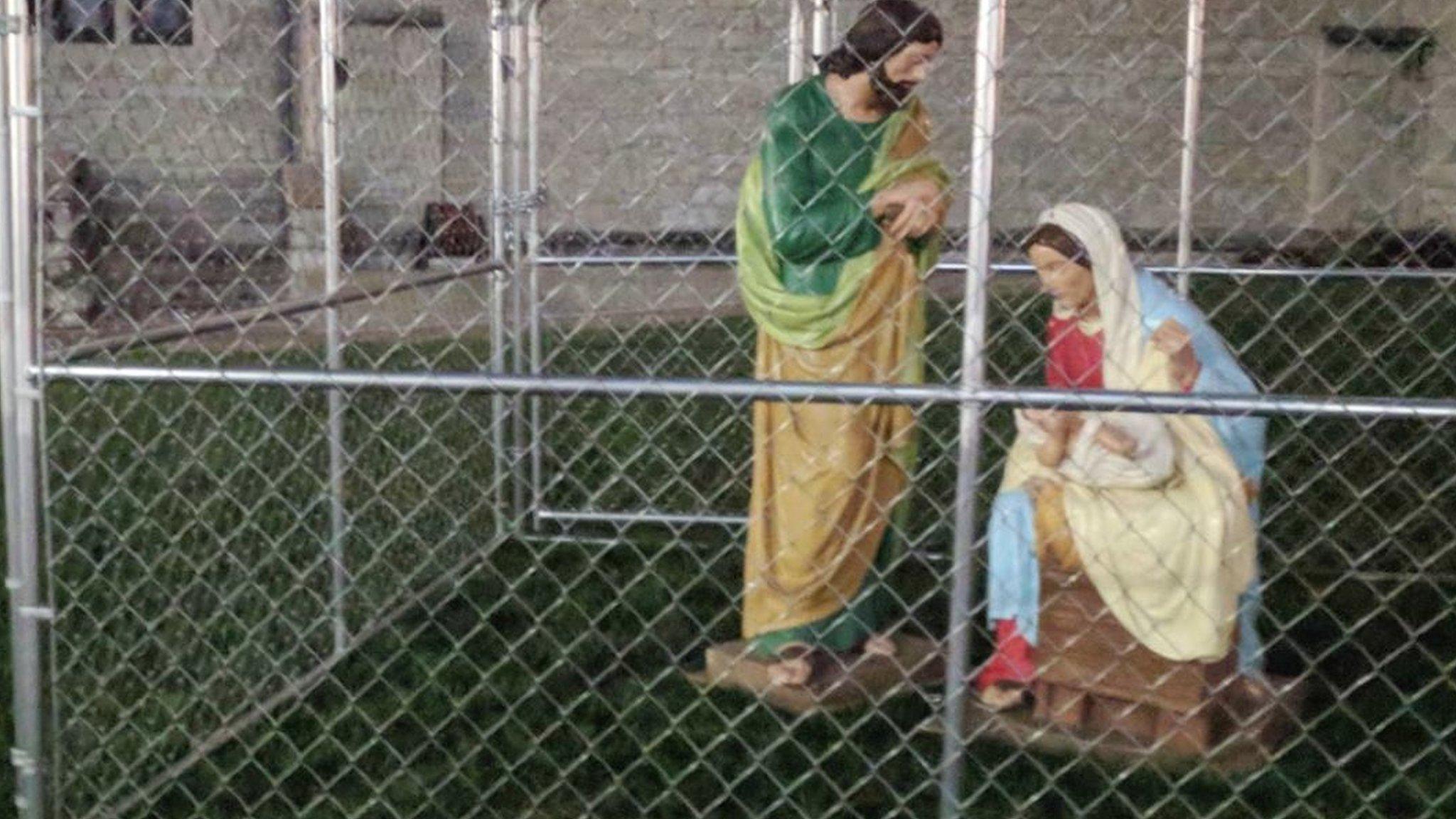
- Published2 July 2018
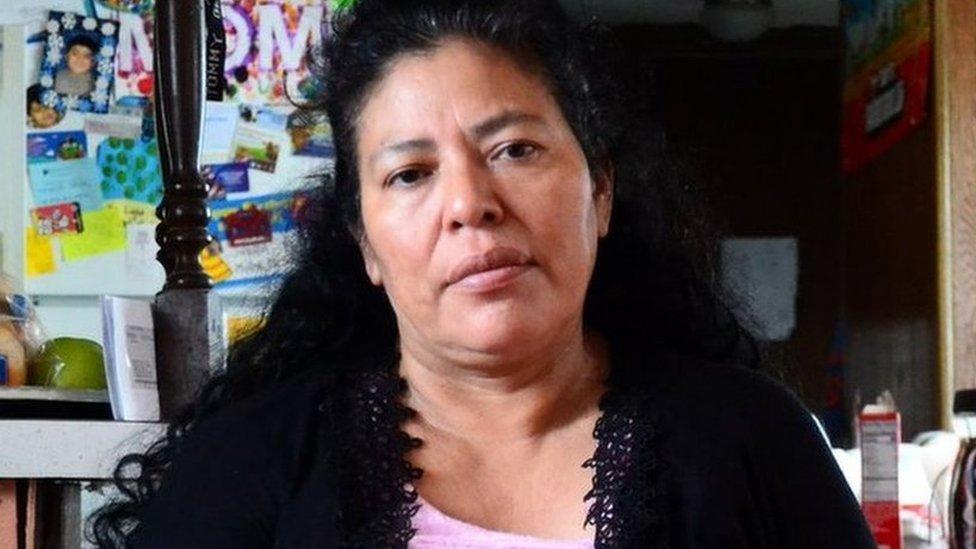
- Published17 June 2018
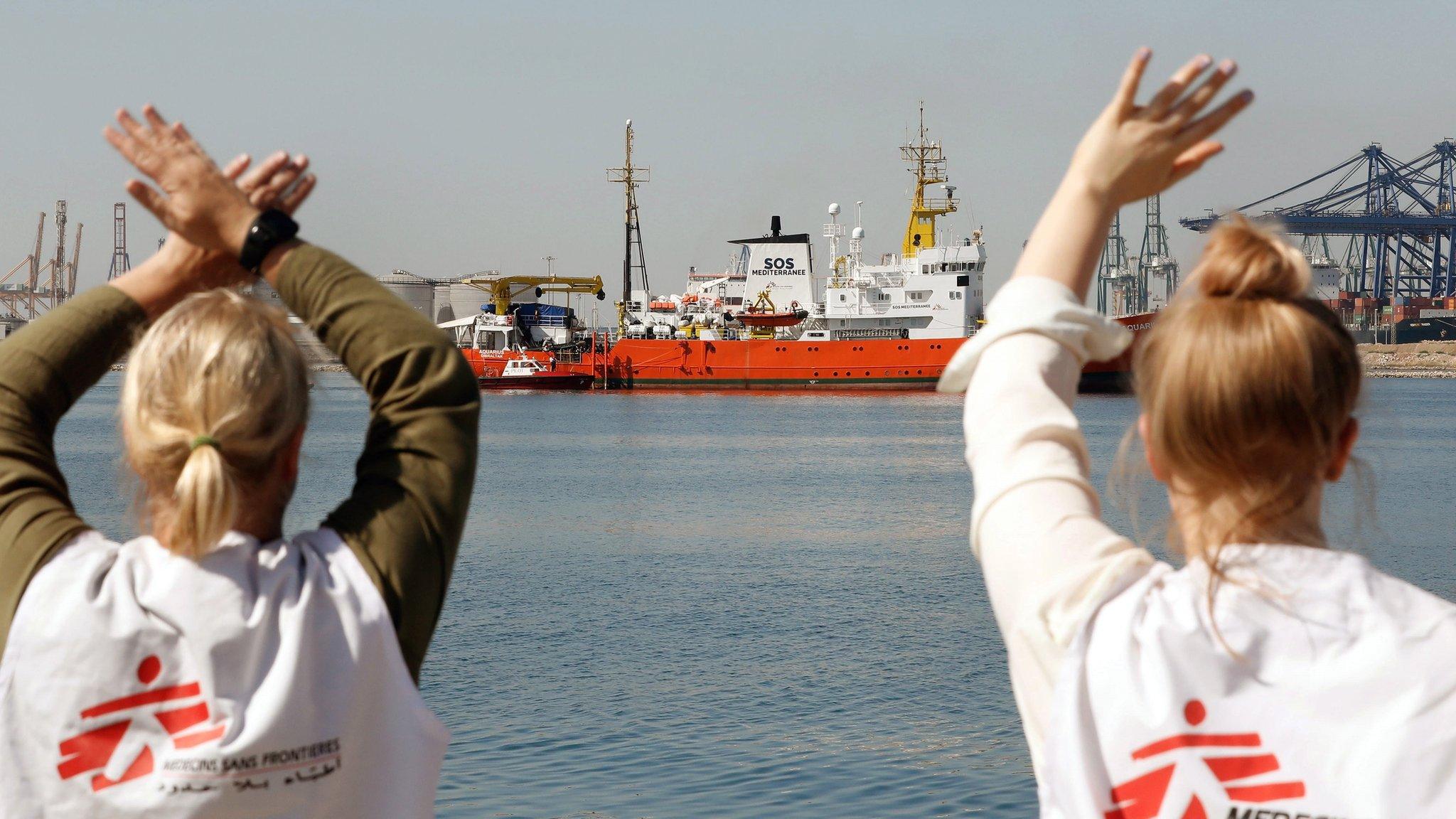
- Published11 June 2018
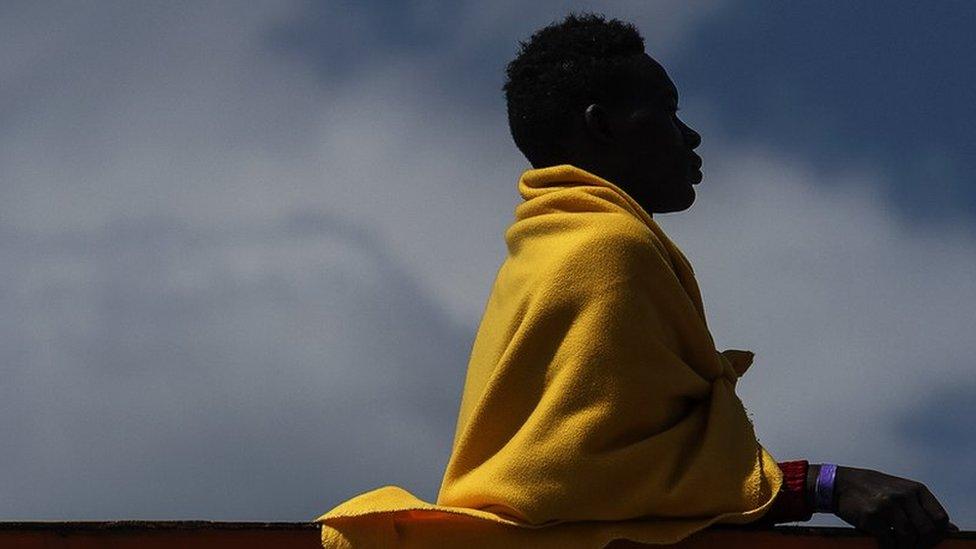
- Published13 June 2018